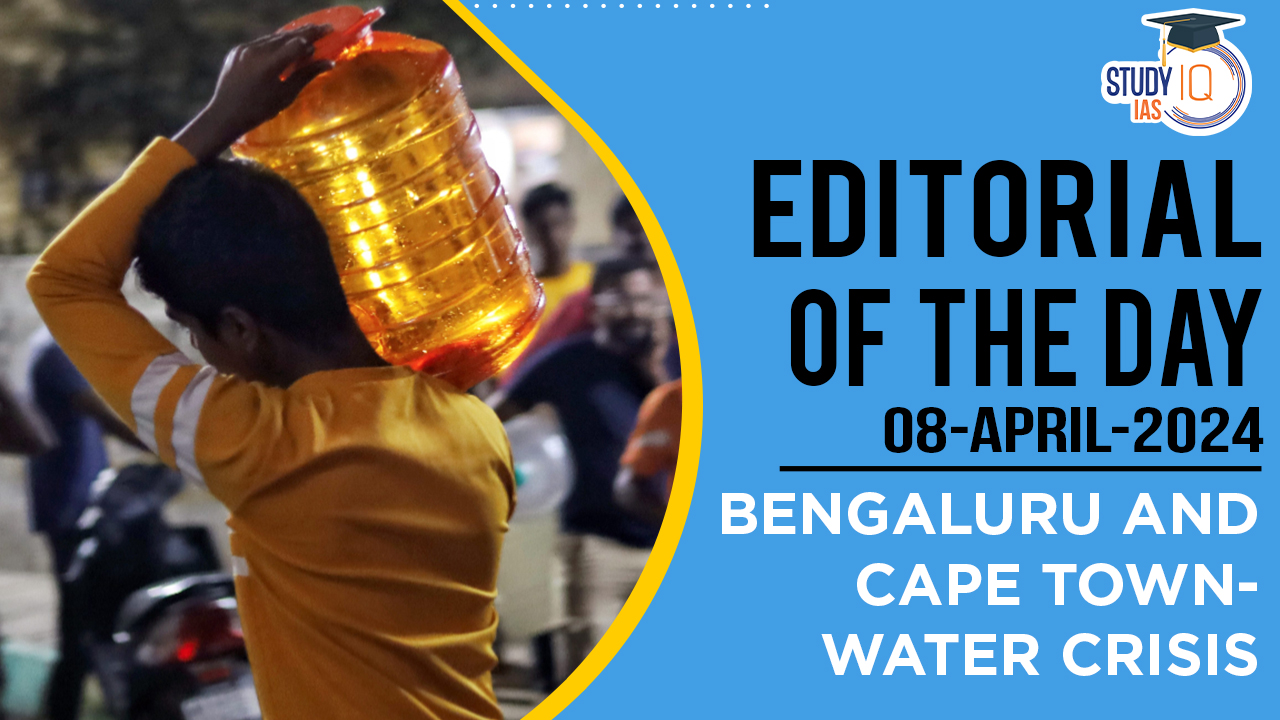Table of Contents
Context: Bengaluru is grappling with acute water scarcity, reminiscent of Cape Town’s crisis (2015-18).
Cape Town’s Water Crisis (2015-2018): A Case Study
- Cause: Prolonged drought and below-average rainfall.
- Impact:
- Critically low reservoir levels (e.g., Theewaterskloof Dam at 11.3% capacity).
- “Day Zero” threat – potential complete cut-off of municipal water supply.
- Strict water rationing (50 litres/day per person).
- Increased reliance on public water points and tankers.
- Recovery: By 2020, the situation had returned to normal.
Similarities Between Bengaluru and Cape Town
- Low rainfall in key water source areas (Cauvery basin for Bengaluru).
- Depleting groundwater reserves.
- Critically low reservoir levels (e.g., KRS Dam at under 28% capacity).
- Many public borewells are running dry.
- Areas dependent on water tankers (Varthur, Marathahalli, etc.).
Role of Urbanisation
- Rapid, unplanned urbanisation has strained water infrastructure in both cities.
- Cape Town: Existing infrastructure struggled to keep up with demand, leading to leaks and inefficiencies.
- Bengaluru: Loss of green cover (from 80% to 4%) and water bodies (from 1452 to 193) reduces water percolation.
- Particularly problematic for East Bengaluru with tech parks and high-rise buildings.
We’re now on WhatsApp. Click to Join
Impact on Daily Lives
- Water restrictions implemented in both cities.
- Cape Town: 50 litres/day limit, restrictions on car washing, etc.
- Bengaluru: Similar restrictions on non-essential water usage (car washing, pools, etc.) with fines for violators.
- Increased health risks for the poor due to lack of water for sanitation and hygiene.
- Residents queuing up for water from public taps and tankers.


 Utkal Divas 2025: Odisha Foundation Day ...
Utkal Divas 2025: Odisha Foundation Day ...
 List of Military Exercises of India 2024...
List of Military Exercises of India 2024...
 GPS Spoofing and Its Impact in India: A ...
GPS Spoofing and Its Impact in India: A ...





















